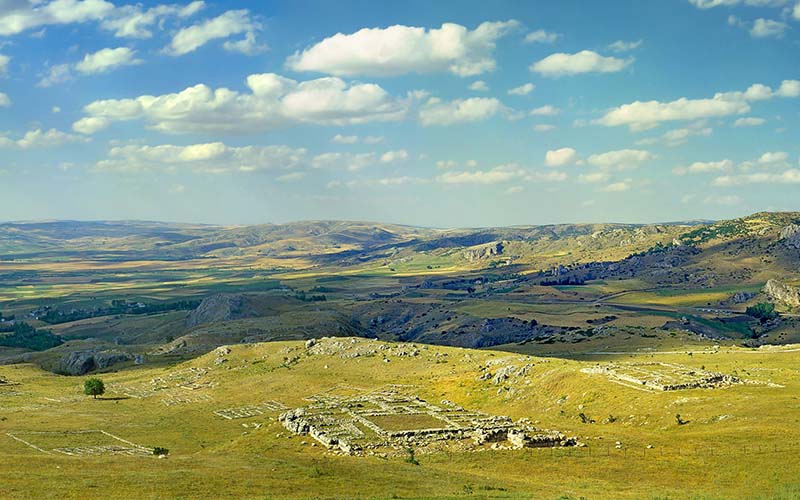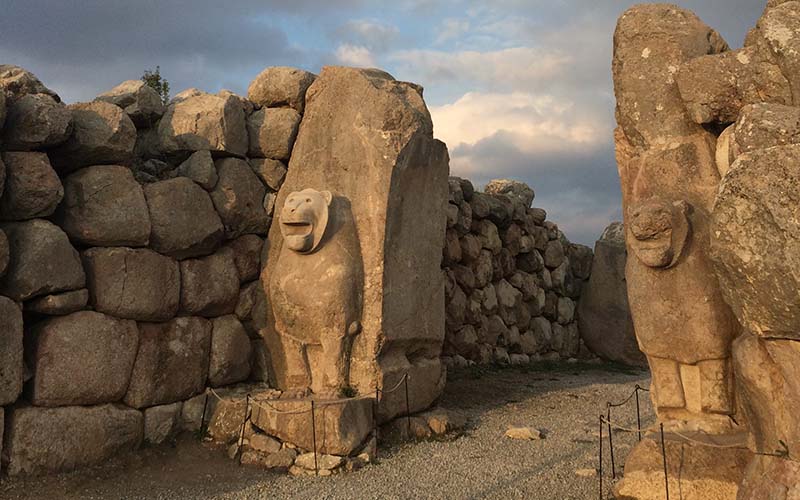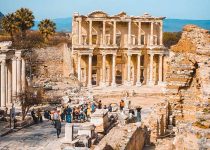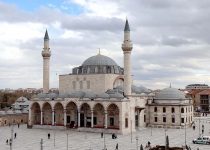Hattusa – An Impressive UNESCO Heritage Site in Turkey

Image Credit: www.dailysabah.com
Turkey is a striking nation with a geographical location like none other. It straddles two significant continents – Asia and Europe and has some of the most incredible attractions to offer its visitors. This remarkable country is also home to numerous ruins, including Ephesus, Mount Nemrut, Hierapolis, Troy, Gobekli Tepe, and Aphrodisias. Most of these fascinating ruins are UNESCO World Heritage Sites and take you on a journey to the country’s deep-rooted history. Another amazing place that joins the above list of historical wonders is Hattusa, the capital of Anatolia’s Bronze Age Hittite empire. Do you want to know the best things you can do in Hattusa, Turkey? Keep reading!
About Hattusa
Hattuşa has been listed as a UNESCO World Heritage since 1986 and is situated in Corum, in the Boğazkale village. It is approximately 192 kilometers east of Ankara and perfect for a day trip from here. The ruins are divided into upper and lower cities and spread roughly 7 km if you cover them on foot.
The Hittites empire was massive during the Bronze Age and was believed to be the first Indo-European civilization. They were considered one of the most powerful empires in the region. They controlled an extensive stretch of land spanning from modern-day Turkey to Syria.
It is one of the oldest civilizations, extremely rich in arts and architecture, and its first settlements date back to 3000 BC. Here are some of the best things you can do in the walled city of Hattusa that are worth applying for your Turkey visa.
Boğazkale Museum
Located on the way to Hattuşa in Boğazkale, this archeological museum is a treasure -trove of art and daily objects. This museum was opened to the public in 1966 but fully renovated in 2011. It contains exhibits found at the site of the Hittite Hattuşa city during excavations. You can find bronze tools, relics, written tablets, and various impressive objects from the Anatolian civilization, with detailed explanations on the panels.
Green Stone of Hattusa
Green Stone is a perfect cubed structure and is believed to be created by humans from natural rock. It is around 2 feet in height and has a lot of mystery surrounding it. It is referred to as a wish stone among locals and lures many tourists from the country and abroad. Though studies are still going on about this stone’s origin, it continues to intrigue visitors and is one of the best places to visit in Turkey.
The Lion’s Gate

The Lion’s Gate was built in the early 14th century BCE and is flanked by two towers with lion heads. The upper parts of these towers are destroyed. It was the commoner’s access to Hattuşa, which was locked and sealed every night. It is believed that the lion heads were put at the city’s entrance to ward off evil.
The Sphinx’s Gate
The iconic Sphinx’s Gate was used by royalty or religious priests. The original Sphinxes are in the Bogazkale Museum now; the ones you see on display are copies. The Sphinxes were taken to Berlin during excavations by Germans, but in 2010, they were returned to the country after a Turkish government minister threatened to reject further permission for excavation.
The Rampart of Yerkapi
The Rampart of Yerkapi is an artificial ridge that is the highest point of the city’s fortifications, and its name means Gate in the Earth. The city wall arches toward the summit from the King’s Gate in the east and the Lion Gate in the west, and crowns the ridge. The Sphinx Gate is located just in the middle of this. The rampart is 250 meters long at the foundation and over 80 meters wide.
The Unknown Warrior and the King’s Gate
The King’s Gate is one of the three main gates in the city’s upper fortifications. The sideways profile of a warrior has confused historians and scholars about the entity of the person. Going by the gate’s name, they initially thought it was an old Hittite king. But this theory was soon proven wrong and seeing the depictions on the helmet of this warrior, they deduced that it might be of a Hittite God.
The Hieroglyph Chamber
The Hieroglyph Chamber was initially thought to be a tomb. However, it is now known to be a symbolic entrance to the world beneath the land. It is made of limestone, and the walls are decorated with inscriptions, reliefs, and Luvian hieroglyphs.
The Nisantepe
The Nisantepe is a huge 8.5-meter rock with Luwian hieroglyphics chiseled into it. Unfortunately, most of the text is undecipherable due to bad weather and erosion.
Yazılıkaya and the twelve Gods of the Underworld
Yazillkaya Sanctuary is an impressive open-air temple built from the rocks hidden in the cliffs. It is situated approximately 2 km from the city. It consists of two open-air rooms covered with intricately carved relief patterns and depictions of animals, gods, and goddesses. It dates back more than 5 thousand years and is still in excellent condition. The rock-cut chambers of Yazillkaya Sanctuary are referred to as the “Greater Gallery” (Room A) and the “Lesser Gallery” (Room B).
Alacahoyuk
Alacahoyuk is another important archaeological site located around 30 -minutes to the north of the city. This site houses pre-Hittite era royal tombs dating back to 25000 BC. These tombs are deeply carved and have stood the test of time. Like Hattuşa, this town also comprised an outer defense wall with inner and exterior gateways. Excavations are still happening here, and several of the original artifacts and finds were moved to the Anatolian Civilization Museum in Ankara.
Alacahoyuk Museum
The Alacahoyuk Museum provides a sneak peek into the past. The museum spans two rooms and is not significant in size, but it consists of finds from the Alacahoyuk and Pazarlı archeological sites. It also has many remains belonging to the Hittite, Phrygian, and Ottoman periods.
Logistics to Reach Hattusa
About 200 kilometers east of Ankara is the town of Bogazkale, which is the closest to Hattusa. The nearest noteworthy tourist destination, Amasya, is 180 kilometers to the northeast. On a map, the trip from Amasya to Bogazkale appears simple, but it is not unless you actually have your own transportation. Using public transportation to get around Turkey is generally simple, and people are accustomed to arriving at a bus station and finding a bus or dolmus (the fixed-route minivan) to get to their next location with ease. Though occasionally a change is necessary, people usually reach their destination without too much difficulty. While there are occasionally exceptions, they are usually limited to remote locations or less-frequented locations.
Is Visiting Hattusa Worth It?
Hattusa is definitely worth the effort—after all, it is another UNESCO site—but it does call for a lot of creativity, particularly at Great Temple. But the breathtaking scenery in the region makes this trip worthwhile. It is possible to truly imagine what life had been thousands of years ago by strolling through the abandoned city. The site offers valuable insights into the little-known Hittite civilization that is now lost. The size of the fortifications and architecture conveys a sense of the former affluence and strength of the empire. Extending beyond the city limits, the surrounding terrain harbors intriguing archaeological ruins such as Yazilikaya rock sanctuary. Hattusa is an astounding place to see if you desire to feel like you are in the long-lost civilization & immerse yourself in olden history. In a way which textbooks cannot, the ruins illuminate the mysterious Hittites.
Reaching Bogazkale and Hattusa through Public Transport
Hattusa is one of those locations that are much easier to visit with one’s own vehicle due to the dearth of public transportation. Additionally, you would be able to avoid taking long, sweltering walks to and from the sites. It may be necessary to haggle for a taxi fare between Sungurlu and Bozgale, which is estimated to be between 60 and 70 Turkish lira. As an alternative, you could rent a vehicle and explore more of Central Turkey. If you can manage to get out of the city yourself, renting a car in Ankara would be a good idea.
There is no direct public transportation link between Amasya and Bogazkale, so there are two choices: Travel by bus to Sungurlu, which is roughly halfway between Amasya and Ankara, and then continue your journey to Bogazkale by dolmus or another bus or board a bus headed for Ankara, ask the driver to stop, and drop us off near the Bogazkale intersection on the highway.
The second option is a better one. You will be in a better position to hitchhike if the bus does not show up, and you can easily pick up the passing Bogazkale-bound bus, which is the reasoning behind the decision. The bus stops on the other side of the major highway, which you have to cross in order to get to the Bogazkale junction, which is the only inconvenience. It might not be the best idea to dash across the street and climb over the central reservation; instead, take the less traveled route around the flyover.
Conclusion
If you are a history buff, this ancient city of Hattuşa is a must-visit. But even if you are not interested in history, visiting this place is well worth the time, and you can get a glimpse of Turkey’s flourishing past.


